How to photograph fireworks
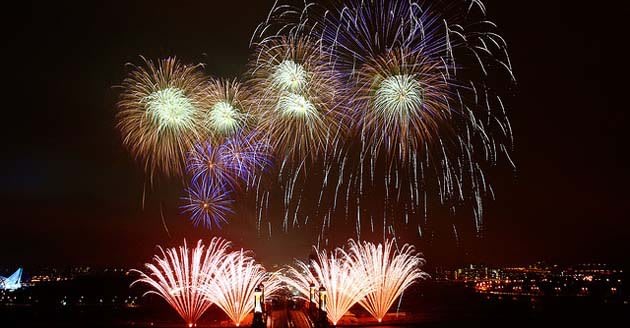
It's happened — somehow, it's gotten to be summer already. Summer means Fourth of July celebrations, and fireworks offer wonderful opportunities for photography. Despite the somewhat challenging circumstances (nighttime and with bright, moving light), it's actually pretty easy to photograph fireworks as long as you follow some simple guidelines. You'll find that many of these suggestions are a lot like those we discussed in our article on how to photograph lightning, because many of the principles are the same.
Tips for using your camera phoneBefore we dive in, know that no matter what equipment you have at hand, you can still snap great fireworks photos. Fireworks have the benefit of generally being very bright, so it is possible to get decent photos even without an expensive camera. Since the sensors on compact cameras and camera phones don't tend to be as large as on the average DSLR, motion blur can be a significant issue. Take extra care to hold your camera as still and steady as possible. If your camera phone can capture video, that might be an even better option, especially for the grand finale! And read on — much of the general shooting advice here will still help you work wonders in your photos.
Fireworks Mode: Easy and automated
Beyond camera phones, many "point-and-shoot" digital cameras offer a special fireworks shooting mode that's definitely worth trying out. To figure out if your camera has this option, hunt around in the settings for a small icon that looks like a burst of fireworks (hopefully it will be labeled). This mode will automate much of the challenge of capturing bright bursts of light at night, ideal if you'd prefer to kick back and let your camera do the legwork.
Beyond camera phones, many "point-and-shoot" digital cameras offer a special fireworks shooting mode that's definitely worth trying out. To figure out if your camera has this option, hunt around in the settings for a small icon that looks like a burst of fireworks (hopefully it will be labeled). This mode will automate much of the challenge of capturing bright bursts of light at night, ideal if you'd prefer to kick back and let your camera do the legwork.
It should be noted that "night mode" is not the same as "fireworks mode" — the former will use the camera's flash, which isn't helpful for shooting fireworks, so make sure you turn off the flash if you use that setting. If you don't have a fireworks mode and you aren't comfortable delving into the more advanced settings, you might want to try landscape mode; it will set your focus to infinity and give you a nice, wide depth of field.
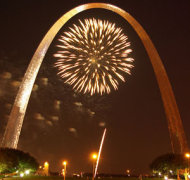
Point of view is important
Where you decide to shoot from will depend on the location of the fireworks and what sort of shots you're going for. Ask around or look online to determine where the fireworks will be launched, so you can figure out ahead of time the best place to be to photograph them. The ideal position would be some distance away, at a vantage point above ground level — a balcony, a hillside, or even just standing on a picnic table or other raised object. The elevation and distance result in nice, wide-open shots of the fireworks themselves, as well as the scene around and beneath them.
Try to avoid external light sources like street lamps, if possible. They won't necessarily ruin your photos, but they will detract from the fireworks themselves. It's also a good idea to check the speed and direction of the wind so that, ideally, the wind blows the smoke from the fireworks away from you and your camera.
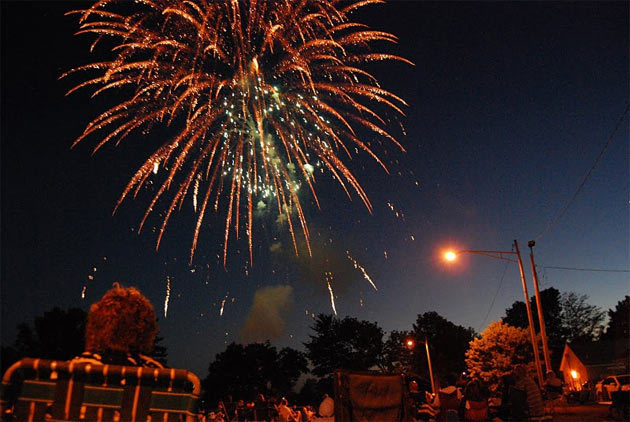
Scenery can be as important as the display
While the colorful explosions are beautiful to watch and provide lovely photos, pictures focusing only on the bursts aren't terribly exciting in and of themselves. Consider including scenery in your pictures, both to offer a sense of scale and to keep your compositions interesting. Obviously, you want an unobstructed view of the sky, but trees and other objects can provide interesting framing for your compositions. Being lucky enough to be somewhere the fireworks will reflect in a body of water like a lake, bay, or pond can result in stunning photographs.
Also consider whether you want people in your photographs. Including spectators can be a great way to capture the excitement of a fireworks display and gives you the opportunity to play around with techniques such as silhouetting. You could also consider including buildings, monuments, and similar structures as an addition to the fireworks themselves.
Use a tripod
As with most low-light photography, you'll get the best results if you use a tripod. This is especially important when photographing fireworks, as the long exposure times needed to capture the spectacle will also capture any movement of your camera. In a pinch, you can always try setting your camera on something like the hood of your car or a bench, but a tripod is definitely the best way to go.
Use a tripod
As with most low-light photography, you'll get the best results if you use a tripod. This is especially important when photographing fireworks, as the long exposure times needed to capture the spectacle will also capture any movement of your camera. In a pinch, you can always try setting your camera on something like the hood of your car or a bench, but a tripod is definitely the best way to go.
You'll also probably want to use a remote release of some sort — either a remote control or a wired shutter release — for the same reason. You could just use the self-timer function, but since it's sometimes hard to predict when the most beautiful fireworks will light up the sky, timing your shots right will be difficult.

No flash needed here
In almost all fireworks photography, you should keep the flash turned off. You might want to use it to briefly illuminate a subject in the foreground while still allowing the fireworks themselves to light up the background. This can be tricky, though, and works best with an external flash.
The other thing you'll want to turn off is your camera's auto-focus function. A bright, moving object in a dark sky will utterly confuse your camera, which will spend so long whirring and stuttering to try to find something to focus on that you'll miss your shot! Turn it to manual, and set the focus to infinity (or focus on an object in the foreground, if that suits your composition).
Slow shutter speeds
The beauty of fireworks isn't just in the explosion itself, but in the trails of light that blossom out and slowly fade away as they fall. You'll have to use relatively slow shutter speeds to capture the whole show. Luckily, you'll probably have a bit of warning, as most fireworks make some sound as they shoot into the sky, but takes practice and a bit of luck to get the timing right.
The beauty of fireworks isn't just in the explosion itself, but in the trails of light that blossom out and slowly fade away as they fall. You'll have to use relatively slow shutter speeds to capture the whole show. Luckily, you'll probably have a bit of warning, as most fireworks make some sound as they shoot into the sky, but takes practice and a bit of luck to get the timing right.
If you have a bulb setting on your camera, which makes the shutter will stay open exactly as long as you hold the button down, that might be the most useful. If not, try using the shutter priority mode and setting the exposure time for 1 to 3 seconds.
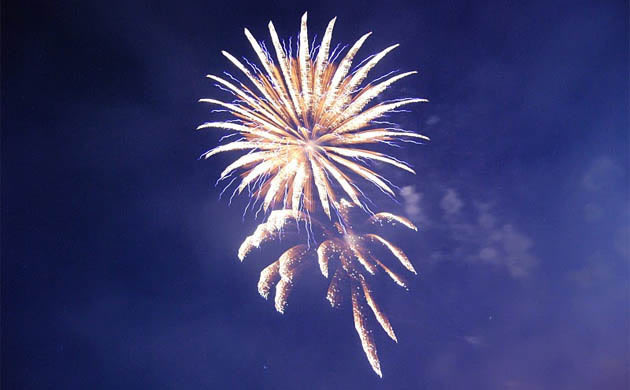
Slow shutter speeds create stunning shots
Finding the right balance between capturing enough of the explosion's beauty and not ending up with a washed-out blur or a grainy mess can be tricky. Play with your camera's settings and experiment with different shutter speed and aperture settings to see what works best. Since you're using a tripod, you should be able to select a relatively low ISO setting of 100-400 — remember that you're not exposing for the dark sky, but for the bright flashes of color.
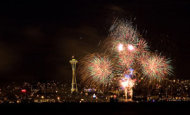
Fireworks over Seattle
Light up your own backyard
In addition to the fireworks displays put on by municipalities, most states allow individuals to use some forms of smaller fireworks on their own property. While not as spectacular as the huge commercial displays, these smaller explosives can provide some beautiful photographs. What can be even more fun is that with your own personal fireworks display, you can control exactly when, where, and how everything happens. This is a great time to try out light painting techniques with sparklers!
In addition to the fireworks displays put on by municipalities, most states allow individuals to use some forms of smaller fireworks on their own property. While not as spectacular as the huge commercial displays, these smaller explosives can provide some beautiful photographs. What can be even more fun is that with your own personal fireworks display, you can control exactly when, where, and how everything happens. This is a great time to try out light painting techniques with sparklers!
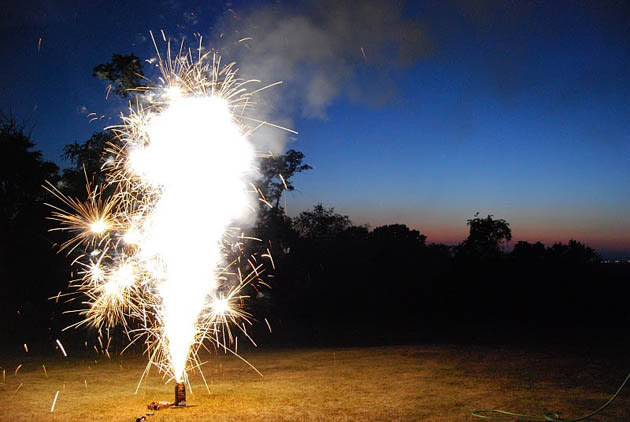
Smaller shows can still create stunning shots
Comments
Post a Comment